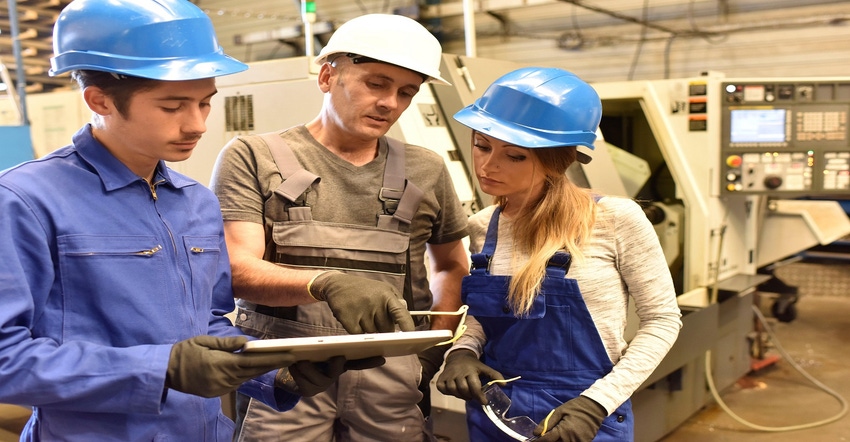Digital Transformation Revamps Worker Training
Manufacturers are turning to YouTube-like e-learning modules to bring workers up to speed in the digital world.
November 30, 2022

Manufacturing workers are faced with a steep learning curve as the digital transformation begins to change everything along the production line. Instead of learning one or two systems to do their job, users now have to balance multiple software systems. Knowledge of code doesn’t help. Nor do classes. Workers have to learn varied software systems snippet-by-snippet. In a nod to the world of Gen Z, manufacturers are bringing their workers up to speed in increments, task by task.
In the last few years, manufacturers have discovered that moving to digital systems is more difficult than adding a few sensors for predictive maintenance. Software integration and working training are essential. “We’re still ever-evolving the digital transformation. It’s a long-term turn of the boat. What we’re seeing is additional emphasis on the user,” said Kevin Kuker, VP of training and support services at IMAGINiT Technologies. “We’re teaching staff to use software tools. People used to know how to use two or three software tools, Now, they need to know four or five.”
Juggling Multiple Software Platforms

The training required for successful digital transformation isn’t delivered in a classroom setting. Workers can’t learn and retain all of the platform requirements that affect every task. The learning has to be available on demand when required. “The need for education is expanding with numerous tools, and we’re seeing the need for that training to be on demand,” said Kuker. “It’s not like you take a class and you’re good to go. Users need to go back to their job and use the new tool. They have to use the e-learning tool for a refresher that will help them move beyond the basics and learn specific functions.”
This new form of e-learning is the YouTube-ification of training. This comes naturally to Millenials and Gen Z workers. “Unlike years past when you go to two classes on a product, workers are in and out of e-learning. They need ongoing access so they can focus on what they need and when they need it,” said Kuker. “It’s generational. Kids coming out of college are used to learning two or three snippets. That's driving the whole e-learning industry. People can’t learn everything and retain it.”
With integrated digital tools expanding beyond the manufacturer’s silos, workers need to interact with software that is not part of their ordinary wheelhouse. They may need to interact with design as well as production and logistics. “We now need everybody to know how to use control tools. We need to know what changed, when it changed, and why it changed,” said Kuker. “You don’t want to make changes without others knowing about it. The need for education to accomplish this is growing.”
About the Author(s)
You May Also Like





